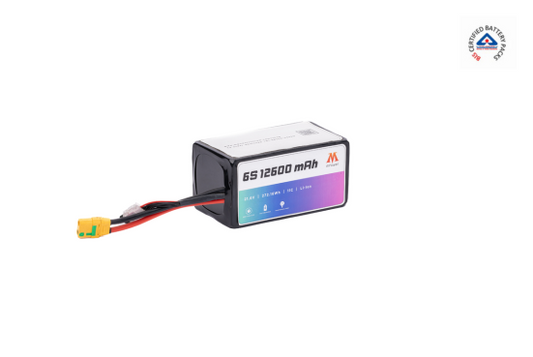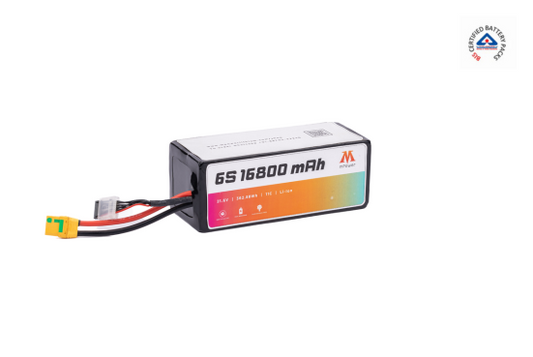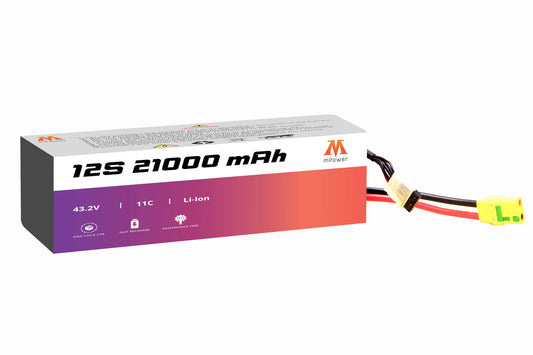
Drones have revolutionized various industries, from aerial photography and agricultural monitoring to search and rescue operations. However, one of the most critical aspects that drone manufacturers and operators grapple with is balancing flight time with battery weight. The ability to extend flight time while maintaining an optimal battery weight is a complex challenge that involves intricate engineering and strategic compromises.
Are You Choosing the Right Battery for Drone?
When selecting batteries for drone, several factors need to be considered, including energy density, weight, size, and overall capacity. Lithium-polymer (LiPo) batteries have been commonly used due to their high energy density and relatively low weight. However, LiPo batteries are now considered older technology, and it's often better to opt for lithium-ion (Li-ion) batteries, which are more advanced. Li-ion batteries offer improved energy density, longer lifespan, and greater efficiency, making them a superior choice for modern drone applications.
Energy Density vs. Weight:
High energy density batteries provide more power for a given weight, which is crucial for extending flight times. However, increasing energy density often comes with trade-offs in terms of battery safety and lifespan.
Size and Shape:
The physical dimensions of batteries for drones also play a significant role. A larger battery may offer more capacity, but it can also impact the aerodynamics and maneuverability of the drone.
Capacity and Discharge Rate:
The capacity of a battery, typically measured in milliamp-hours (mAh), determines how long a drone can stay airborne. The discharge rate, measured in C-rating, indicates how quickly the battery can deliver power. A balance between these two factors is essential for optimal drone performance.
Challenges in Balancing Flight Time and Battery Weight
Weight Constraints:
One of the most apparent challenges is the weight of the battery itself. Batteries for drones must be light enough not to overburden the drone's propulsion system while still providing sufficient energy. Each gram of additional weight can reduce flight time and increase energy consumption.
Energy Efficiency:
Achieving high energy efficiency is crucial. Drones with inefficient power systems will require larger, heavier batteries to achieve desired flight times, creating a vicious cycle of adding weight and reducing efficiency.
Battery Life and Performance Degradation:
Over time, batteries for drones experience performance degradation due to repeated charging and discharging cycles. This reduces their capacity and can significantly impact flight times. Ensuring that drones have batteries that can maintain performance over many cycles is a persistent challenge.
Environmental Factors:
External factors such as temperature, humidity, and altitude can affect battery performance. For instance, cold temperatures can reduce battery efficiency, while high altitudes can strain the drone’s motors, requiring more power and, thus, more frequent battery changes.
Solutions and Innovations
Reliable Battery Sources for Drones:
Purchasing batteries from reliable sources is essential to drone quality and performance. mPower offers advanced battery technologies, including solid-state and lithium-sulfur batteries, which promise higher energy densities and better safety profiles. These advancements could offer longer flight times without the weight penalty, making them a smart choice for serious drone enthusiasts and professionals.
Hybrid Power Systems:
Combining batteries with other power sources, such as fuel cells or solar panels, can extend flight times. Hybrid systems can provide a continuous power supply while minimizing the weight carried by the drone.
Optimized Power Management Systems:
Developing sophisticated power management systems that optimize energy use during flight can help extend battery life. These systems can dynamically adjust power output based on flight conditions and requirements.
Modular Battery Designs:
Modular batteries allow for easy swapping, enabling drones to return to flight with minimal downtime quickly. This approach can be particularly useful for commercial applications where continuous operation is crucial.
Improved Drone Design:
Reducing the overall weight of the drone through lightweight materials and efficient design can help mitigate the impact of battery weight. Aerodynamic designs that reduce drag and improve lift can also enhance energy efficiency.
Practical Considerations for Drone Operators
Understanding the limitations and capabilities of drone batteries is essential for drone operators. Regular maintenance and monitoring of battery health can prevent unexpected performance drops. Investing in high-quality batteries and keeping them within optimal operating conditions can extend their lifespan and reliability.
Conclusion
Balancing flight time and battery weight in drones presents a multifaceted challenge involving numerous factors such as energy efficiency, weight constraints, thermal management, and performance degradation over time. Achieving the ideal balance requires innovative solutions and advancements in battery technology.
mPower is leading the way by offering advanced drone batteries designed to maximize flight time while minimizing weight. By utilizing advanced technologies such as solid-state and lithium-ion batteries, mPower ensures that drone operators can achieve longer, more efficient flights without compromising on safety or performance. As the drone industry continues to evolve, the role of reliable and advanced batteries will remain pivotal in overcoming these challenges and pushing the boundaries of what drones can achieve.
Click here to check out the mPower battery for drone now.











